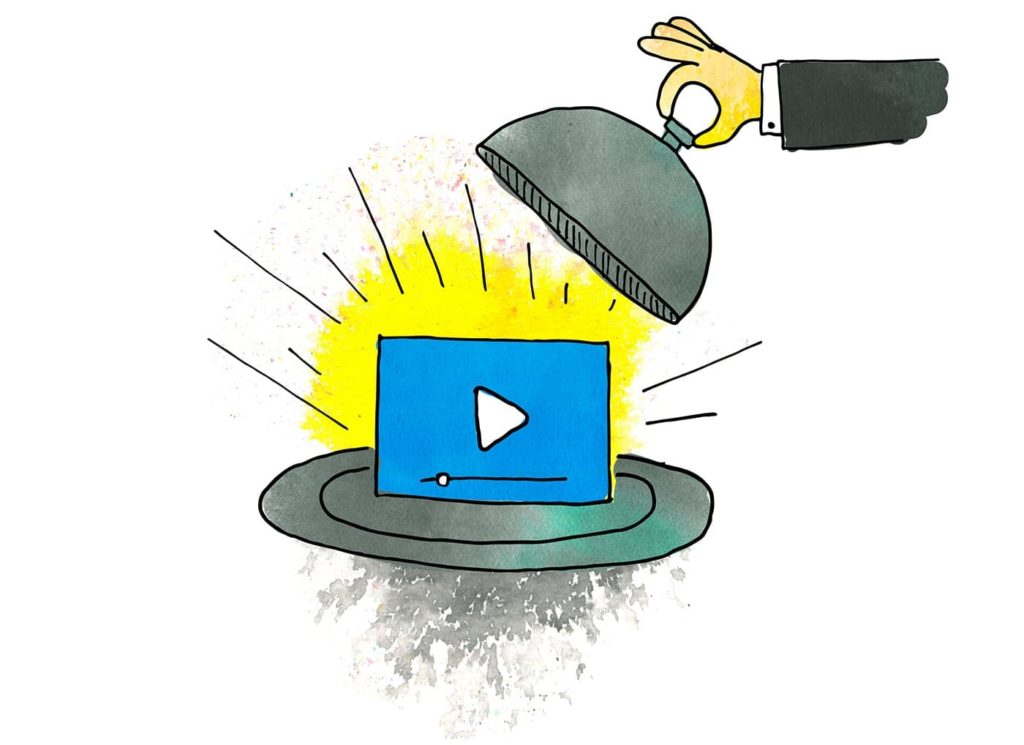On August 1, 1981, at precisely 12:01 AM, MTV aired “Video Killed The Radio Star”, the first music video ever broadcast on television. Buggles’ one-hit-wonder added video to our cassette tapes and records, and forever changed how we engage with and consume music.
Fast forward thirty one years, and video is still making enormous impacts.
As marketers, we know video is the most compelling vehicle in storytelling. As video continues to evolve, are we prepared to take advantage of this powerful resource in our branding, marketing and communications strategies?
In the 2019 Health Care Marketing Trends Report, we explored how successful brands share their stories through personalized, interactive video.
The massive shift away from traditional cable viewing to over-the-top (OTT) streaming, increased consumer expectations of interactive experiences with video, and the staggering improvements in technology are driving marketers to re-prioritize video in their marketing strategies and budgets.
Commercials: Then versus Now
In 1941, the world’s first ever commercial aired for the Bulova Watch Company. The ad was 10 seconds long, cost (in today’s dollars) between $4 and $9 to make, and was seen by roughly 4,000 people in New York City. Over the ensuing several decades, brands invested millions in television advertising, from sponsored programs to traditional :30 and :60 commercials to infamously expensive Super Bowl campaigns.
The first seismic shift in commercial advertising was the result of cable television and remote controls. With the advent of cable, viewers’ program options increased from 4 or 5 stations to hundreds. And remotes allow viewers to easily flip among those hundreds of channels as soon as a commercial began.
VCRs then became mainstream, allowing viewers to manage and organize their television consumption. For the first time, viewers could watch specific programs when they wanted. And with fast-forward buttons, VCRs created the first “skip this ad” opportunities.
Today, cord cutting is a major trend. Over-the-top video viewing accounts for more than 25% of all TV viewing in the U.S. Linear TV ratings are plummeting, as Connected TVs (CTVs) now outnumber cable boxes.
With the mainstream adoption of OTT and CTV, marketing efforts must dramatically shift. Gone are the days of exclusively leveraging program content or time-of-day to determine media placement.
Mass broadcast is not a bad media strategy. It’s simply incomplete.
CTV and OTT allow advertisers to directly reach specific, high-value viewers. Healthcare marketers who solely invest precious dollars in traditional media tactics are neglecting core audiences. And opportunities to serve targeted messages to drive buying behaviors are unrealized.

Consumer Behaviors and Expectations
Video has revolutionized how we access information and make buying decisions.
As humans, we are physically wired to respond to movement, the intonation and pitch of voices, and body language, all of which create strong emotional connections. Additionally, our brains process visual data 600,000 times faster than text.
Simply put, we are naturally drawn to video.
Enter YouTube, the second largest search engine. YouTube displays more than 1 billion hours of video each day, and more than 300 hours of video are uploaded every minute. We search for video on every imaginable subject, from how to change a spark plug to how to find a new doctor.
Not only do we prefer video when gathering information, video also works to convert potential customers. We spend about 88% more time on sites with video, and video accounts for 80% of consumer online traffic. According to Unruly, enjoyment of video increases purchase intent by 97% and brand association by 139%!
And we watch videos when and where we want, right from our smartphones, resulting in nearly three-fourths of the buying journey completed independently. Consumers delay speaking directly with someone in an organization for as long as possible, opting to research, learn and make preliminary purchase decisions on their own. Because of this, marketers must develop engaging video content to attract and retain the attention of customers and guide them through the buying cycle.
Consider a patient’s journey through any of your service lines. In what ways might video influence the buying decision?
Technology’s Impact on Video
The rapid evolution in smartphone camera technology and the availability of editing apps are pushing the boundaries of video production and creating opportunities to easily share inspiring stories in real-time on social and gaming apps.
As people make a decisive shift toward consuming most messages on their mobile devices, marketers, brands and advertising professionals must change the way they tell brand stories.
With every story, highlighting certain elements will drive different consumer behaviors. And that means particular mediums are best suited for different stories. Sophisticated video production and editing are still very much in demand and necessary. No matter how great the technology, a camera is just a tool in the arsenal to tell a brand story. A solidly engaging video requires a compelling human experience to bring the story to life.
If you’re interested in expanding your video presence, we’d love to explore possibilities with you.


